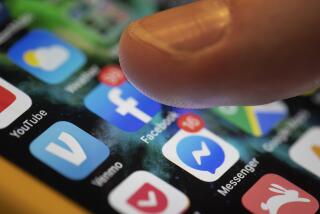Another battle over the switch to digital TV
This post has been updated, as indicated below.
Unless the Federal Communications Commission swoops in, Tuesday could be a belated day of reckoning for cable TV customers with old-school analog sets.
Local television stations shut off their analog broadcasts three years ago, forcing anyone who relied on over-the-air signals to switch to swap their analog TVs for digital ones or, more affordably, buy digital-to-analog converter boxes. The latter cost about $50, but the feds offered to subsidize the purchase of up to two boxes per home, cutting the price to about $10.
Most cable TV subscribers, however, didn’t have to worry about the change in technology. That’s because the FCC required cable operators that offered a non-digital tier of programming to include analog versions of all the local TV stations as well as digital ones. The typical subscribers didn’t even need to rent cable boxes to view those basic channels; they could simply connect the cable wire directly to their cable-ready analog TV.
The FCC’s “viewability” rule was meant to be temporary, however, and it’s set to expire Tuesday. Broadcasters -- especially independent, ethnic and minority outlets -- and some consumer groups are urging the commission to keep the rule in place for three more years. They argue that 12.6 million homes and about 30 million viewers who still have analog TVs would have to start renting a cable box in order to maintain access to local channels if cable operators dropped the analog versions of them.
Cable operators oppose any extension of the requirement, arguing that it’s unconstitutional and provides little value. The FCC had floated a proposal for a three-year extension, but last week Chairman Julius Genachowski called for a much speedier transition -- phasing out the analog requirement in six months.
Notably, cable operators that have switched to all-digital systems do not have to provide analog versions of local DTV channels. And cable operators are heading in that direction; according to one advocacy group for broadcasters, up to 95% of cable subscribers will be served by all-digital systems within three years. Such a conversion saves a huge amount of bandwidth, opening space for new networks, more video-on-demand programming and broadband services. But it also requires penurious cable operators to shell out for a new generation of set-top boxes, which is why they haven’t moved faster.
The prime beneficiaries of the viewability rule are the cable customers with analog TV sets. But broadcasters argue that if the rule were dropped, the stations that have niche audiences or serve low-income households could be hurt too. That’s because their viewers may not be able to afford to rent a cable box for each analog TV in their home.
It’s not clear how many people would be affected, because there’s no telling how quickly cable operators would stop carrying analog signals. Additionally, the “30 million” figure tossed around by the National Assn. of Broadcasters no doubt includes some people who have both digital and analog TVs, or who already rent at least one cable converter box that can work with analog sets. These homes would still have access to the local channels on some TVs in their home, albeit not all of them.
And there’s always the rabbit-ears option, although that won’t work for every household.
It’s not the federal government’s job to shield consumers from cable-TV price hikes; Congress deregulated cable rates years ago. But there’s an additional wrinkle that adds weight to the broadcasters’ position. As noted above, the viewability rule doesn’t require cable operators to carry local analog TV signals after they’ve shifted to an all-digital platform. Instead, it requires them to carry those signals as long as they’re transmitting any other channels in analog. In other words, it’s a non-discrimination requirement.
That’s important because the major cable operators also operate TV networks that compete with the local broadcast stations for viewers. Here’s how the National Assn. of Broadcasters put it: Ending the viewability rule “would allow cable operators to discriminate among local signals, or provide cable network signals in a viewable format but not local broadcast signals.” That would violate the federal Communications Act, which requires cable operators to provide a level playing field for all programmers, the NAB argues.
Harry Jessell of TVNewsCheck, a blog that covers the broadcasting industry, suspects that Genachowski’s goal is to persuade more of the smaller broadcasters to sell all or part of their airwaves in the coming incentive auctions. It’s an interesting bit of speculation, but it’s not as persuasive as the broadcasters’ anti-discrimination case. I’d add one other argument: The longer extension gives cable operators an incentive to speed their switch to all-digital systems, whose efficiencies enable them to deliver more programming and services.
[Updated 1:25 p.m. June 12: The commission agreed Tuesday to let the viewability rule expire, but required cable operators that haven’t yet upgraded to all-digital systems to transmit analog versions of local stations until mid-December. Look for more cable operators to follow Comcast’s lead in offering “digital transport adapters” to customers with analog sets.]
ALSO:
Getting America’s financial house in order
Catholics, gays and a parallel universe called Canada
Newton: L.A., land of ‘Don Giovanni’ and the Playboy Mansion
More to Read
A cure for the common opinion
Get thought-provoking perspectives with our weekly newsletter.
You may occasionally receive promotional content from the Los Angeles Times.











